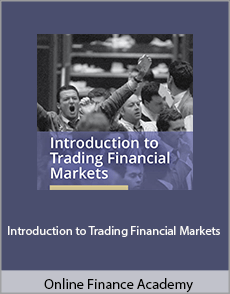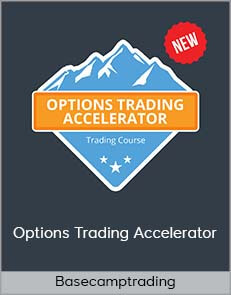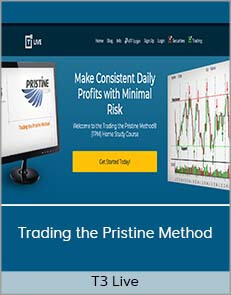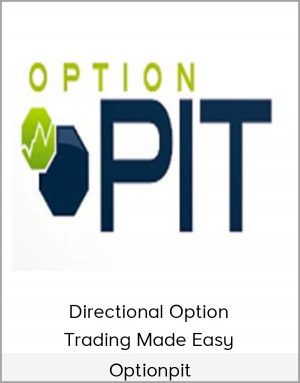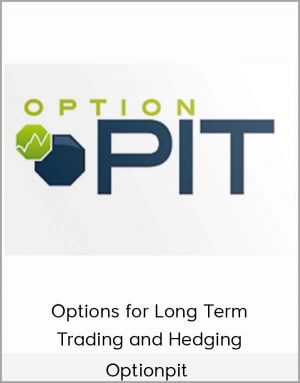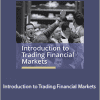Online Finance Academy – Introduction to Trading Financial Markets
$125.00$495.00 (-75%)
Finally, the course looks at market psychology, trade planning, risk management and trade system development. Trading is a business of managing risk and using probabilities to your advantage.
Online Finance Academy – Introduction to Trading Financial Markets

Check it out: Online Finance Academy – Introduction to Trading Financial Markets
Description:
The Introduction to Trading Financial Markets Course will provide you with an expansive overview of the techniques and strategies that work best in trading futures and stocks in the intra-day and inter-day time frames. The course is geared to novice and intermediate traders who require mastery of the rudiments of technical analysis, macro fundamental analysis, and risk / capital management. By the end of the course students will have a dependable set of technical trading tools, a solid understanding of the economic fundamentals that affect market movements and be able to develop a dependable trading system that will give them the necessary confidence to succeed in their trading career.
The course begins with technical analysis and goes beyond traditional textbook theory. Most of the technical indicators you will see – such as stochastics, moving averages etc – do not work. In this course you will learn why. You will also learn alternative methods which focus more on pattern recognition, market psychology, probability and risk management. You will learn how to properly use Fibonacci analysis, volume profile, wedges and other levels in addition to the more common technical trading tools. You will also learn where to place stops and profit targets and understand the psychology behind using these levels
Next, you will learn how to use economic macro-fundamentals. Markets move up and down – ultimately – because of macro-economic variables. You need to understand how Central Banks operate and affect the financial markets, how large institutions trade, and how currency movements and capital flows interact and affect the longer-term trend. This is critical knowledge, whether you are a position trader or a scalper. The fact is, the vast majority of retail traders lack basic knowledge in what is arguably the most important aspect of trading.
Finally, the course looks at market psychology, trade planning, risk management and trade system development. Trading is a business of managing risk and using probabilities to your advantage. There are certain ratios and relationships between profit / loss, drawdown to net gain, etc., which one needs to consider to be profitable over the long run. It is often the case that many very knowledgeable traders fail to do much better than break even simply because they have not mastered capital management and market psychology. This component of the course will allow you to make great strides in this respect as you learn to develop greater trading discipline.
As a self-study course, you will need to do your homework and follow the recommended exercises and readings. The most successful traders have always showed the most initiative and personal discipline; you will need to do the same. Nobody will make you successful but yourself. However, we have provided you with all the tools you require to master the art of trading and reach all your trading goals.
Key ‘takeaways’ and topics to be covered in this course:
- Understand financial market movements from the perspective of classical physics and human psychology as you develop an intuition for developing chart patterns
- Learn high probability technical (chart) trade setups
- Understand the mechanics of trading futures, and learn how professional traders move the markets to their advantage (and at the typical retail trader’s expense)
- Learn how to use global macroeconomic fundamentals and apply this learning to trading economic releases and longer-term trade setups.
- Course applicants receive a discount of 10% from our Spread Trading Course (worth $195 USD.)
MODULES
Module 1. Introduction to Technical Trading
- Understand market movement from the perspective of basic physics and psychology, including concepts such as: vacuum zones, magnetism, inertia, equilibrium and pressure.
- Learn why most technical indicators and systems do not work.
- How to use trading ladders (DOM).
Module 2. Chart Types, Trading Ladders, and High Probability Set-ups
- Recognize high probability trade set-ups and key chart patterns in any time frame.
- Learn to integrate Fibonacci and key levels in your analysis.
- Learn how, when and why certain Candlestick patterns are most likely to materialize.
- Learn how to use a variety of chart types in a cohesive trading strategy, including: Heiken Ashi, Tick / Order Flow, Volume Profile and Japanese Candlesticks.
Module 3. Introduction to Macro-fundamental Trading
- Introduction to major Central Banks: ECB, BOE, SNB, BOC, RBA, RBNZ, BOJ, and PBOC
- Understanding Central bank speak and communication policies.
- Understand correlations between bond futures, equities, commodities, and currencies.
- Understand how monetary policy affects financial markets and key trading products.
- Learn how to evaluate the significance of key economic releases in a real-time market.
Module 4. System Development and Back-testing. Trading plans and Algorithmic Trading.
- Probabilities of key technical indicators and patterns.
- Trading system rudiments: avoiding curve fitting, primary and secondary filters.
- Integrating stops, profit targets and set-ups into a cohesive trading plan.
- Your trade journal and trade tracker (excel).
- Back testing of your trading system: See how effective your trading ideas are and how to fine-tune your trading methods for long term success.
Module 5. Volume, Open Interest, and Introduction to Spread Trading.
- Learn how to spot high probability trade set-ups for the long term using Open interest and volume analysis.
- Learn how to use order flow and levels to identify key support and resistance in financial and agricultural futures.
- Learn the basics of Spread Trading grains and financial futures.
Module 6. Risk Management and Psychology
- Discover where to focus your energies to accelerate your path to consistent profits.
- Understanding your trading personality.
- Ratios for success: commission, capital at risk, profit target / stop loss.
- Further readings in trading psychology.


















